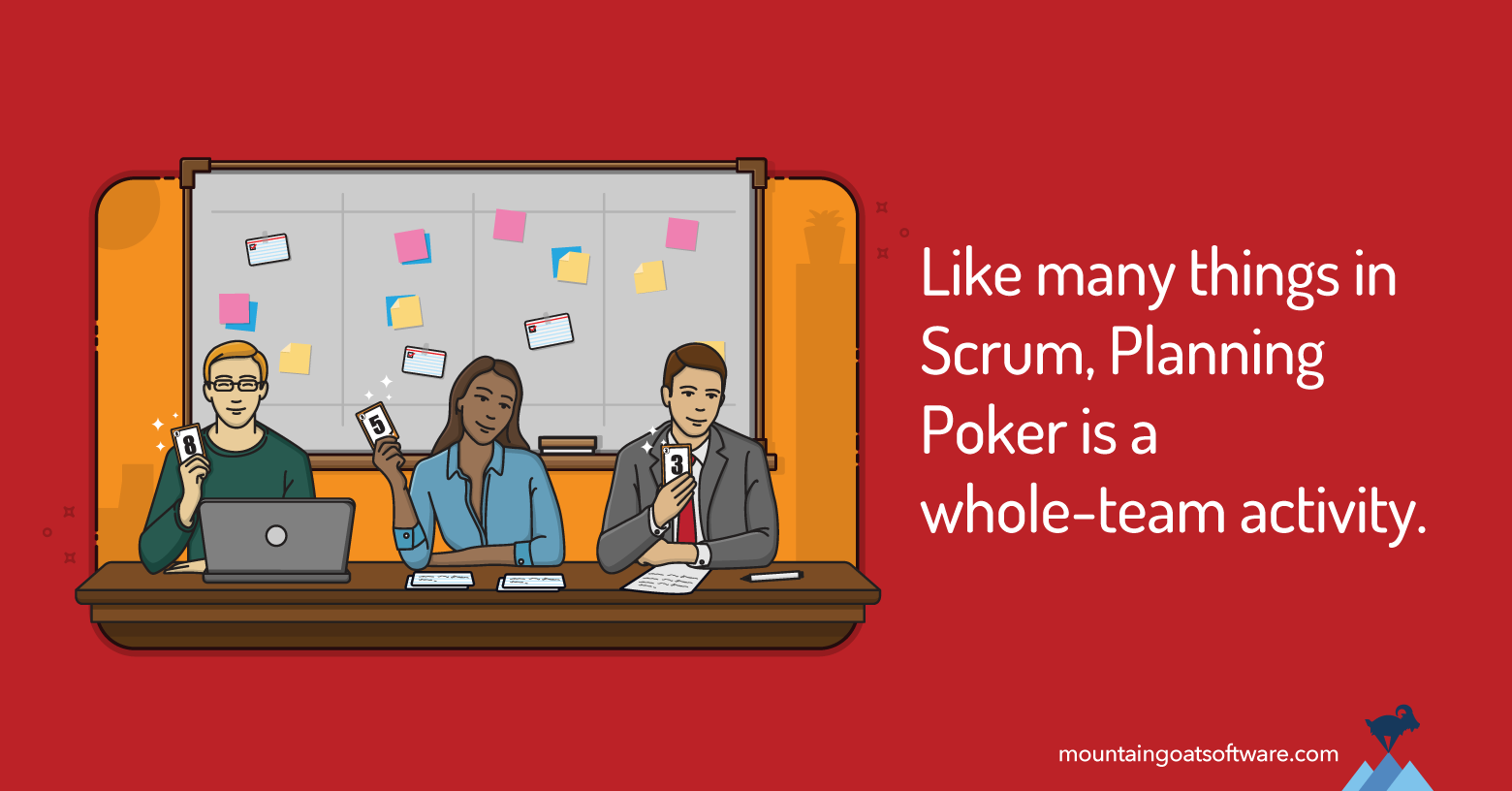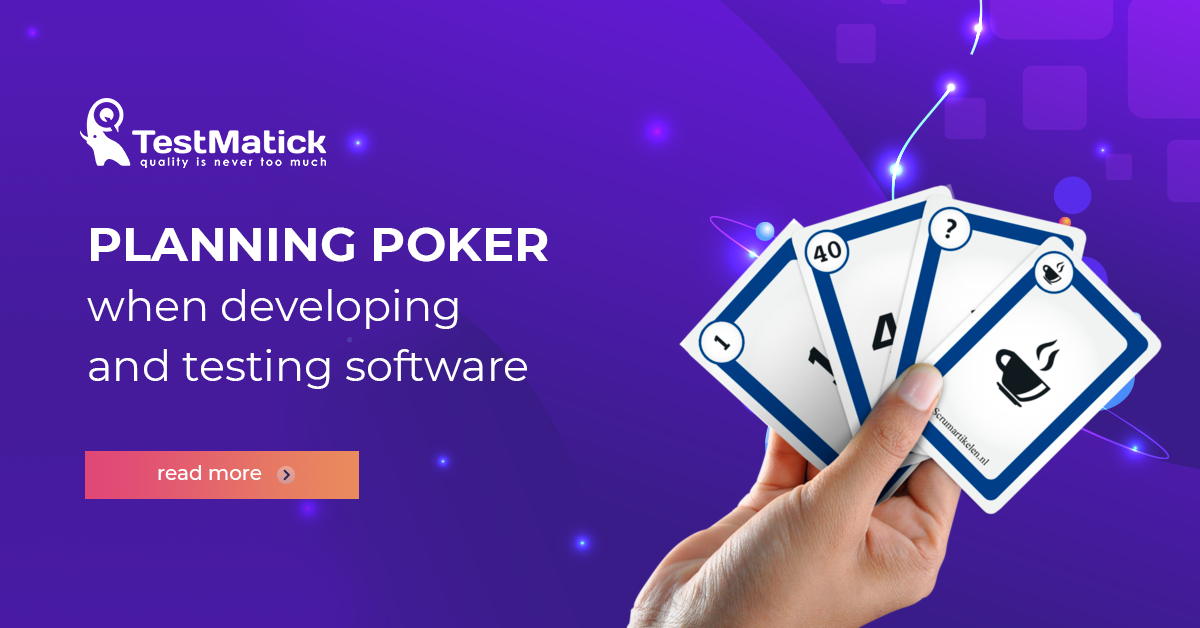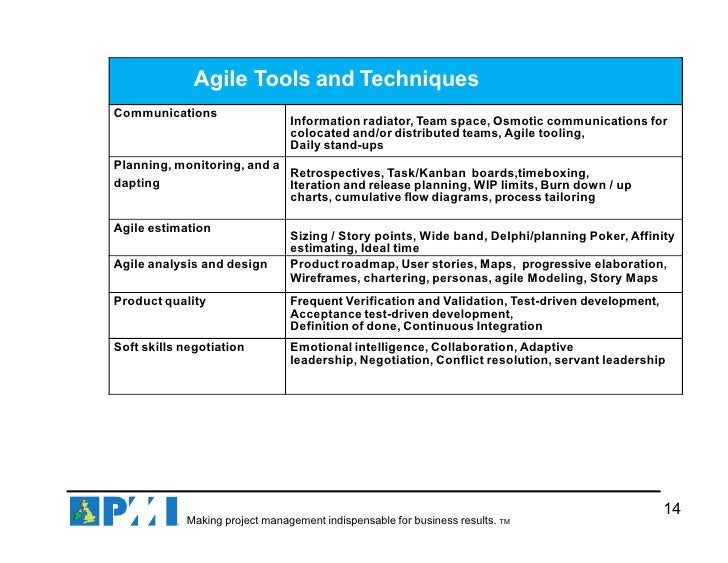Agile Planning Poker Rules
What is Planning Poker?
Agile Planning Poker Rules For Beginners
Planning Poker is an agile estimating and planning technique that is consensus based. To start a poker planning session, the product owner or customer reads an agile user story or describes a feature to the estimators.

Each estimator is holding a deck of Planning Poker cards with values like 0, 1, 2, 3, 5, 8, 13, 20, 40 and 100, which is the sequence we recommend. The values represent the number of story points, ideal days, or other units in which the team estimates.
The Ultimate Planning Agile Poker. Planning Poker helps Scrum & Agile Development teams to estimate the effort to reach their goals. It is a game designed to be a fun way to quickly reach consensus without any cognitive bias. The Ultimate Planning Agile Poker is suitable for teams of up to 8 people. To start a poker planning session, the product owner or customer reads an agile user story or describes a feature to the estimators. I’ve called it priority poker because it’s very similar to planning poker (as often used in Agile projects), the main difference being that instead of choosing estimates players choose and then discuss with the group a priority from a set of cards. I’ve used it successfully in the past to help groups to prioritise a number of different.
The estimators discuss the feature, asking questions of the product owner as needed. When the feature has been fully discussed, each estimator privately selects one card to represent his or her estimate. All cards are then revealed at the same time.
If all estimators selected the same value, that becomes the estimate. If not, the estimators discuss their estimates. The high and low estimators should especially share their reasons. After further discussion, each estimator reselects an estimate card, and all cards are again revealed at the same time.
The poker planning process is repeated until consensus is achieved or until the estimators decide that agile estimating and planning of a particular item needs to be deferred until additional information can be acquired.
When should we engage in Planning Poker?
Most teams will hold a Planning Poker session shortly after an initial product backlog is written. This session (which may be spread over multiple days) is used to create initial estimates useful in scoping or sizing the project.
Because product backlog items (usually in the form of user stories) will continue to be added throughout the project, most teams will find it helpful to conduct subsequent agile estimating and planning sessions once per iteration. Usually this is done a few days before the end of the iteration and immediately following a daily standup, since the whole team is together at that time anyway.
How does poker planning work with a distributed team?
Agile Planning Poker Rules For Dummies
Simple: go to PlanningPoker.com. Mountain Goat Software helped develop that website to offer it as a free resource to the agile community. A product owner, ScrumMaster or agile coach can log in and preload a set of items to be estimated. A private URL can then be shared with estimators who log in and join a conference call or Skype session. Agile estimating and planning then proceeds as it would in person.
Does Planning Poker work?
Absolutely. Teams estimating with Planning Poker consistently report that they arrive at more accurate estimates than with any technique they'd used before.
One reason Planning Poker leads to better estimates is because it brings together multiple expert opinions. Because these experts form a cross-functional team from all disciplines on a software project, they are better suited to the estimation task than anyone else.
After completing a thorough review of the literature on software estimation, Magne Jørgensen, Ph.D., of the Simula Research Lab concluded that “the people most competent in solving the task should estimate it.”
Second, a lively dialogue ensues during poker planning, and estimators are called upon by their peers to justify their estimates. Researchers have found that this improves estimate accuracy, especially on items with a lot of uncertainty as we find on most software projects.
Further, being asked to justify estimates has also been shown to result in estimates that better compensate for missing information. This is important on an agile project because the user stories being estimated are often intentionally vague.
Additionally, studies have shown that averaging individual estimates during agile estimating and planning leads to better results as do group discussions of estimates.
How can I get Planning Poker cards?
Planning Poker cards are available in the Mountain Goat Software store. Mountain Goat Software's branded Planning Poker cards are sold at cost as a courtesy to the agile community.
Our full-color cards are the absolute highest-quality cards available anywhere. They are manufactured by the same company that prints many of the world's most popular playing card brands, including Bicycle, Bee, and the World Poker Tour.
We also offer royalty-free licenses to organizations that wish to produce their own cards. The license is available here: https://www.mountaingoatsoftware.com/agile/planning-poker/license
Recommended Resources Related To Planning Poker
- How Can We Get the Best Estimates of Story Size?
- The Best Way to Establish a Baseline When Playing Planning Poker
- Don’t Average During Planning Poker
- Agile Estimating
Courses Related To Planning Poker
Agile Planning Poker Rules How To Play

Scrum Foundations Video Series

All the foundational knowledge of Scrum including: the framework, values, different roles, meetings, backlogs, and improving efficiency & quality.
I like to use Planning Poker to estimate the user stories on an agile team's product backlog. In this approach individual estimators hold up cards showing their estimates. If estimators disagree they discuss why, ask questions of their product owner (who should be present), and repeat until they come to consensus.
Agile Planning Poker Rules Card Game
Team members often ask me whether they really need to come to consensus or whether they can just take the mean of the individual estimates. The problem with averaging is that it is too easy--rather than have the fierce discussion that is one of the huge benefits of playing Planning Poker teams fall into a trap of playing one or two rounds and then just averaging.
An obvious dysfunction is that one estimator may play the 100 card not because he thinks it will take that long but because he thinks 20 is the right number and other estimators are thinking 8 and 13. For this reason and others, if a team truly feels compelled to average, they should take the median (middle value) rather than the mean (sum of estimates divided by number of estimates). A lot of dark corners are enlightened through the discussion; teams lose out on that when they average.

So while I want teams to come to agreement, I don't care how heartfelt the agreement is. If we agree on 13 some of us may really believe that's the right number. Others may think 8 is right but that 13 is 'close enough.' Still others may think we've discussed the item too long and even though it should be a 20 will give in and call it a 13 just to be done with it. So, rather than average if the team is an impasse I suggest going another round. If still stuck, someone should suggest a reasonable number and see if everyone can 'support it' rather than 'think it's the absolutely perfect number.'